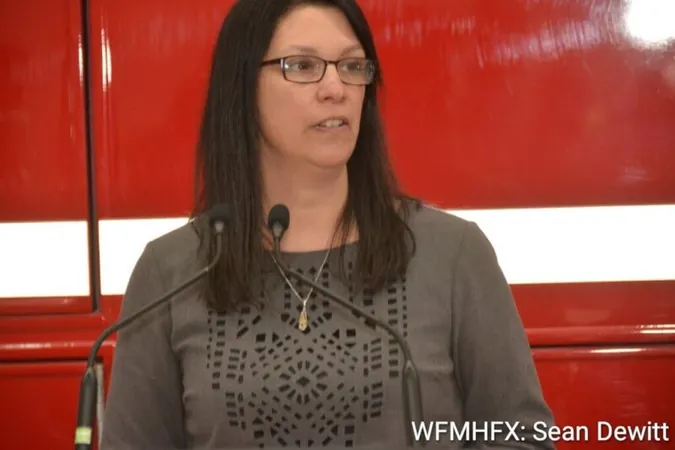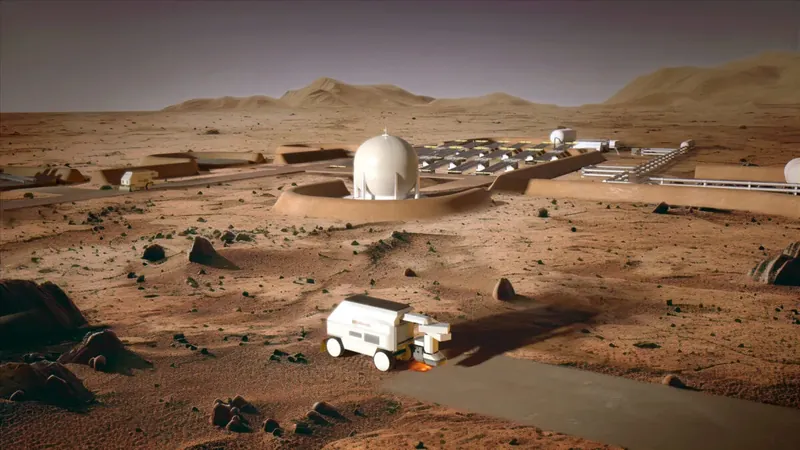
Is the Ocean Slowing Down Its Carbon Absorption? New Research Raises Questions!
2025-04-29
Author: Benjamin
The Ocean's Role in Carbon Absorption
Since the Industrial Revolution, our oceans have played a crucial role in absorbing about 30% of the carbon dioxide emissions generated by human activities. This vital process has significantly helped slow down the impact of climate change. However, recent findings suggest that this crucial function might be facing a noteworthy challenge.
The Alarming Findings
A groundbreaking study conducted by CU Boulder oceanographer Nicole Lovenduski and her team reveals a fascinating twist: the recent decline in oceanic carbon absorption may be more influenced by natural fluctuations than by human-induced climate change. Their research, published in *Environmental Research Letters*, indicates that the climate might not be as pivotal at this stage.
Lovenduski emphasized the importance of this finding, stating, 'The ocean has been doing us this huge favor for so long by taking up man-made carbon. If less is going into the ocean, it means more stays in the atmosphere.' As atmospheric CO2 levels rise, the ocean typically responds by absorbing more carbon—but is that starting to change?
Natural Fluctuations vs. Human Impact
From 2004 to 2014, the ocean absorbed approximately 2 gigatons less carbon than in previous decades, despite a continuous increase in atmospheric carbon. This amount is equivalent to about one-third of the annual carbon emissions produced by the U.S. Lovenduski noted that generally, higher atmospheric carbon levels spur the ocean to absorb more.
The Science Behind the Slowdown
However, as the planet warms, warmer ocean temperatures could hinder this natural absorption process. Warm water takes up less carbon dioxide, and it also slows ocean currents that help circulate colder, nutrient-rich waters. This raises the question—could the current slowdown be part of a broader trend linked to climate warming?
Understanding the Complexity of Ocean Sampling
Measuring human-generated carbon in the ocean is no simple task. Lovenduski and her team embarked on extensive research missions to collect samples from depths across all five oceans, a time-consuming endeavor undertaken roughly once a decade. Thus, any sampling could be influenced by temporary natural phenomena.
Unveiling the Results with Computer Simulations
In their pursuit of answers, Lovenduski’s team employed sophisticated computer simulations to gauge the interplay between external factors like rising atmospheric CO2 and natural internal events like El Niño. Interestingly, the simulations indicated that ocean carbon absorption rates slowed only when internal influences were accounted for, signifying that these natural occurrences could be complicating our understanding.
A Call for Enhanced Ocean Monitoring
According to Lovenduski, current ocean monitoring methods have significant gaps. While we continuously measure atmospheric conditions, ocean chemistry is assessed just once a decade. She advocates for improved methods and technologies, such as deploying autonomous robots, to continuously measure carbon concentrations in seawater throughout various oceanic locations.
What’s Next for Oceanic Research?
The findings underscore the urgent need for a more comprehensive understanding of ocean carbon absorption. Without better monitoring, it remains challenging to grasp the true pace of global warming. As we look ahead, more accurate ocean data could redefine our strategies for combating climate change, paving the way for informed and effective action.









 Brasil (PT)
Brasil (PT)
 Canada (EN)
Canada (EN)
 Chile (ES)
Chile (ES)
 Česko (CS)
Česko (CS)
 대한민국 (KO)
대한민국 (KO)
 España (ES)
España (ES)
 France (FR)
France (FR)
 Hong Kong (EN)
Hong Kong (EN)
 Italia (IT)
Italia (IT)
 日本 (JA)
日本 (JA)
 Magyarország (HU)
Magyarország (HU)
 Norge (NO)
Norge (NO)
 Polska (PL)
Polska (PL)
 Schweiz (DE)
Schweiz (DE)
 Singapore (EN)
Singapore (EN)
 Sverige (SV)
Sverige (SV)
 Suomi (FI)
Suomi (FI)
 Türkiye (TR)
Türkiye (TR)
 الإمارات العربية المتحدة (AR)
الإمارات العربية المتحدة (AR)